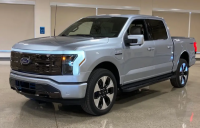For the envisioned future full of electric vehicles, electric lawnmowers, electric power tools, all-electric housing, we the people will need electric power generation from several sources, smart grids, hardened central resources. Public utilities, PSCs, States, and the Federal government must work cohesively to make this happen. Distributed solar makes sense as a part of the solution. Iot makes possible real-time information from distributed resources and intelligent governance of power production from varying sources. Whether the model is power company solar arrays atop leased roof spaces or property owner solar arrays atop roofs with the ability to deliver power into the grid, Iot data flow is critical.
Current solar models range from off-the-grid self-sufficiency to integrated into the grid with excess power buy-back by utilities. There's room for both, but the integrated solution needs to be done intelligently. Power utilities cannot buy back power at the same price at which they deliver it. State governments and PSCs can set buy-back rates as they do delivery rates in a manner that's fair to all and promotes the deployment of distributed solar arrays. The exposed roof area of cities and their suburbs is a resource that can and should be exploited.
In those areas of the country where solar is viable, combining distributed arrays with back-up battery capacity has strategic value - fewer homes, businesses, and population at risk from grid disruptions. Hardening central power resources against disruptions from weather and/or terrorism events is a must (are you paying attention, Texas?) for mitigating impacts. Imagine a grid where disruption in one central facility doesn't black out two-thirds of the populace across multiple states. It's doable right now. What's required is the will and cooperative effort.
[Steps down from the soap box]




